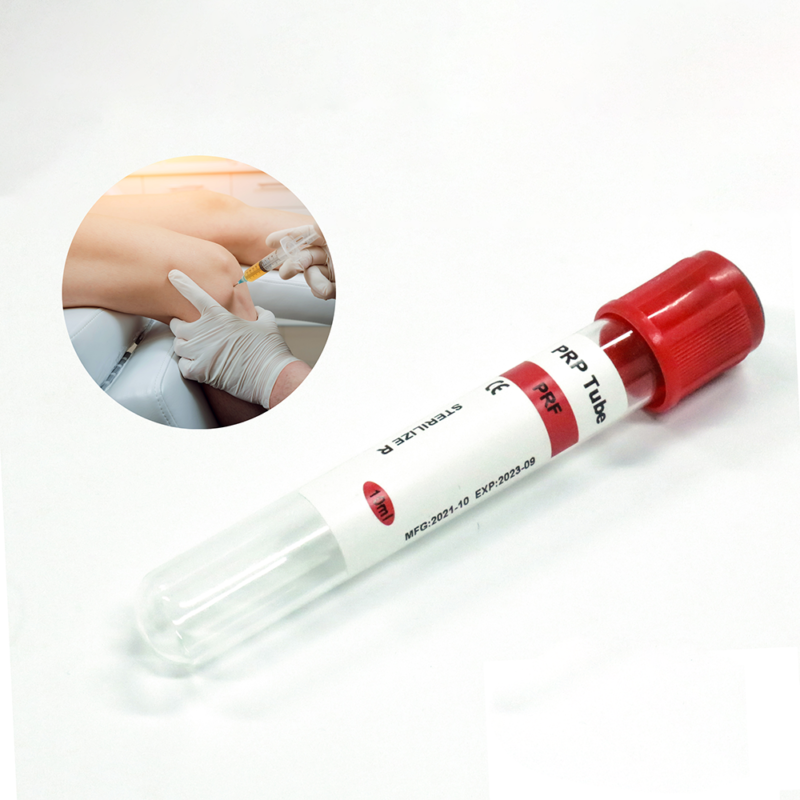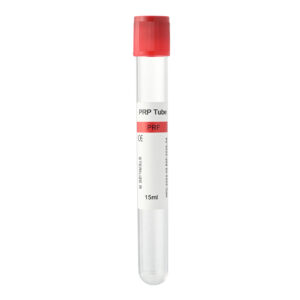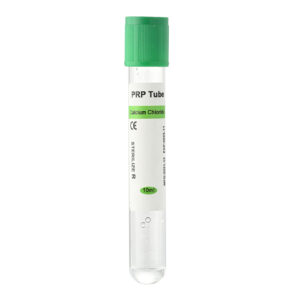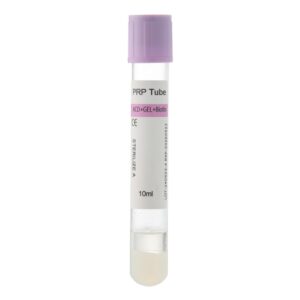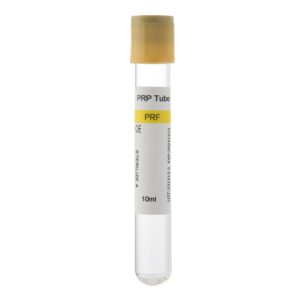PRF (Platelet-Rich Fibrin) has gained significant attention as an innovative and effective treatment method in modern medicine. It is widely used in wound healing, soft tissue repair, and aesthetic treatments. With its natural biological components, PRF offers powerful support for the body’s self-repair mechanisms, making it a popular choice in various medical and cosmetic applications.
Difference Between PRF and PRP
PRF (Platelet-Rich Fibrin) and PRP (Platelet-Rich Plasma) are derived from a patient’s blood, but the preparation process, composition, and effects are notably different. PRP is prepared by centrifuging blood to separate platelets, red blood, and white blood cells. At the same time, PRF undergoes a slower centrifugation process, resulting in a more concentrated fibrin matrix, retaining more natural proteins and promoting sustained healing.
- PRP: Primarily rich in platelets, with less fibrin and fewer growth factors. It is ideal for short-term healing applications.
- PRF: Contains a higher concentration of fibrin, which forms a more stable and long-lasting network that supports continuous tissue regeneration and repair.
Advantages of PRF
Platelet-rich fibrin offers several distinct benefits over traditional treatments, making it highly effective in both medical and aesthetic fields:
- Natural Composition: Platelet-rich fibrin relies solely on the patient’s blood components, without foreign additives. This results in a high level of biocompatibility, significantly reducing the risk of allergic reactions or immune rejection.
- Sustained Bioactivity: PRF’s fibrin matrix slowly releases growth factors, supporting long-term cellular proliferation and tissue regeneration. Unlike PRP, which provides a more immediate effect, Platelet-rich fibrin continues to support healing for an extended period, making it more effective for chronic conditions or injuries.
- Enhanced Tissue Repair: The growth factors, platelets, white blood cells, and stem cells in PRF stimulate new blood vessel formation, accelerate wound healing, and promote regeneration of soft tissues and bone cells. It is particularly beneficial for wound repair, joint pain, bone fracture recovery, and other tissue damage.
- Improved Skin Quality: In aesthetic medicine, Platelet-rich fibrin stimulates collagen production, helping to restore skin elasticity, reduce wrinkles, and improve overall skin texture. It is popular for anti-aging treatments, facial rejuvenation, and skin regeneration.
Applications of PRF
PRF’s wide range of applications goes beyond medical repair, including various aesthetic and clinical treatments. It provides effective solutions in the following areas:
- Wound Healing: PRF significantly accelerates healing after surgeries or traumatic injuries. Healthcare providers use it in dental surgeries, orthopedic procedures, and general wound care to promote faster recovery and reduce the risk of infections.
- Soft Tissue Repair: Platelet-rich fibrin is highly effective in repairing soft tissue injuries, particularly in tendons, ligaments, and muscles. It aids cell regeneration, improving healing and restoring normal function.
- Bone and Joint Treatments: Platelet-rich fibrin is important in bone fracture healing and joint restoration. By promoting the growth of bone cells and accelerating recovery, PRF helps reduce pain and improve joint mobility.
- Aesthetic and Anti-Aging: PRF stimulates the deeper layers of the skin to produce collagen, improving skin tone, texture, and elasticity. It helps reduce fine lines and wrinkles, making it a valuable tool for facial rejuvenation and aesthetic treatments.
PRFM (Platelet-Rich Fibrin Matrix) and Its Role
PRFM is an advanced form of Platelet-rich fibrin often used in applications that require more precise control of growth factor release. It forms a thin, membrane-like structure and is highly effective for delivering regenerative support in targeted treatments.
- Application Areas: Healthcare providers use PRFM in dental implants, skin regeneration, and bone repair, where its ability to deliver controlled and sustained growth factor release is particularly valuable.
PRF Preparation and Treatment Process
The process of preparing Platelet-rich fibrin is relatively straightforward and includes the following steps:
- Blood Collection: Healthcare providers draw a small amount of blood from the patient, typically using specialized collection tubes designed for PRF preparation.
- Centrifugation: Healthcare providers process the blood using a slow-speed centrifuge to separate the platelets, white blood cells, and fibrin, forming the concentrated Platelet-rich fibrin component.
- Application: Healthcare providers apply the resulting PRF to the treatment area through direct injection or topical application. Its fibrin network supports healing and tissue regeneration over time.
Safety and Effectiveness of PRF Treatment
As an autologous treatment, PRF has been clinically proven safe and effective. Since it is derived from the patient’s blood, it eliminates the risks associated with foreign substances and minimizes the chance of adverse reactions. PRF’s excellent biocompatibility also allows it to integrate naturally into the body, enhancing its regenerative effects.
- Long-Term Benefits: PRF provides sustained healing and repair, particularly beneficial for chronic conditions or injuries. Patients can expect visible improvements over time.
- Minimal Side Effects: Due to its natural composition, Platelet-rich fibrin treatment has minimal side effects, and recovery is typically faster than that of other forms of treatment.
Future Outlook for PRF
As advances in biomedical technology continue, healthcare providers expect PRF’s applications to expand. PRF is making a significant impact in fields like dentistry, orthopedics, and aesthetics. Healthcare providers are exploring PRF’s potential to support healing, reduce pain, and regenerate tissues in new clinical settings, including anti-aging therapies, regenerative medicine, and joint health.
With ongoing research and innovation, Platelet-rich fibrin is poised to become an even more integral part of modern healthcare. The treatment’s effectiveness and potential uses will improve as clinical studies continue, offering even more promising patient outcomes worldwide.
Conclusion
PRF (Platelet-Rich Fibrin) is a natural, safe, and effective treatment option that is transforming how we approach medical and aesthetic care. PRF’s ability to promote tissue regeneration and repair is unmatched, from accelerating wound healing to rejuvenating the skin. By utilizing a patient’s blood components, Platelet-rich fibrin minimizes the risk of adverse reactions and offers long-lasting results. If you want to learn more about PRF treatments or have questions about how they can benefit you, please contact our expert team for personalized advice and support.

